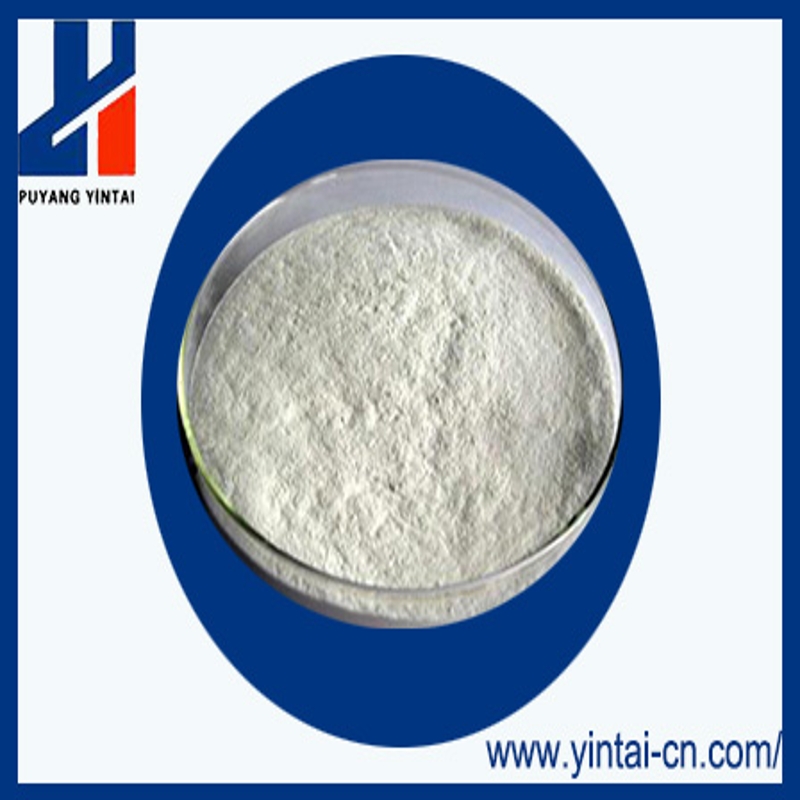-
Categories
-
Pharmaceutical Intermediates
-
Active Pharmaceutical Ingredients
-
Food Additives
- Industrial Coatings
- Agrochemicals
- Dyes and Pigments
- Surfactant
- Flavors and Fragrances
- Chemical Reagents
- Catalyst and Auxiliary
- Natural Products
- Inorganic Chemistry
-
Organic Chemistry
-
Biochemical Engineering
- Analytical Chemistry
- Cosmetic Ingredient
-
Pharmaceutical Intermediates
Promotion
ECHEMI Mall
Wholesale
Weekly Price
Exhibition
News
-
Trade Service
Tan sheep is a regional livestock breed widely distributed in Ningxia, Gansu, Shaanxi and other places, and has important food and economic value
.
The process of converting muscles into meat begins with the cessation
of breathing and blood circulation.
When stimulated by hypoxic-ischemia signal, a series of complex physiological and biochemical reactions occur inside the tissue, and in order to maintain balance, cells/tissues produce adenosine triphosphate (ATP) through glycolysis, thereby regulating the process
of meat quality formation.
Therefore, studying the biochemical regulation of glycolysis during post-slaughter maturation is essential
to understand the development of meat quality characteristics.
Ji Chen, Luo Ruiming* and others from the College of Agronomy of Ningxia University hypothesized that hypoxia-inducible factor (HIF-1) had an important effect on the key enzymes of glycolysis, energy level and meat quality during post-slaughter maturation, so they selected the longitis dorsalis muscle of Tan sheep maturing at 4 °C for 2, 6, 12, 24 and 48 h as the research object, measured the changes of HIF-1 expression at different ripening stages, and determined its relationship with energy level, TPI activity of key enzymes for glycolysis and changes in meat color, in order to provide new ideas and insights for the formation of meat quality after slaughter
。
1.
Changes in pH value and meat color in the early ripening of Tan lamb after slaughter
It can be seen from Table 1 that the pH value of Tan mutton decreased significantly (P<0.
05) 2~48 h after slaughtering, and the decrease was greater<b10> within 12~48 h.
This result is basically consistent
with the research results of Chen Lianhong et al.
on the change of pH value of yak meat within 6~72 h of maturity at 4 °C.
Due to hypoxia and ischemia after slaughter, glycolysis, as the main energy source of cells, will produce pyruvate and lactic acid in addition to ATP, and the phosphoric acid produced by ATP hydrolysis will promote the pH drop; In addition, studies have shown that protein degradation after slaughter can also cause muscle pH to drop
.
Meat color is one of the important indicators for consumers to judge the shelf life of fresh meat, and it is a determining factor
affecting consumers' purchasing behavior.
The color of flesh during post-slaughter maturation is mainly determined
by the redox state of myoglobin.
There is no significant change in L* value within 2~6 h after slaughter (P>0.
05), L* value increases significantly within 6~48 h (P<0.
05), L* value indicates brightness, can reflect the stability of flesh color, L* value increases significantly within 6~48 h may be with the post-slaughter glycolysis muscle pH gradually decreases, when the pH value drops to protein isoelectric point, the adsorption effect of protein on water that is not easy to flow is reduced, resulting in the conversion of water that is not easy to flow in the muscle structure into free water.
When free water adheres to the surface of the muscle, it enhances the reflection of light, resulting in an increase<b15> in the L* value.
The a* value represents the redness, which is the key parameter to determine the color of fresh meat, and there is no significant change in the a* value (P>0.
05) within 2~6 h after slaughter, and significantly increases (P<0.
05)<b16> within 6~48 h.
2.
Changes in HIF-1 expression in the early stage of post-slaughter maturation of Tan mutton
Fig.
1 shows the change of HIF-1 expression in Bund mutton 2~48 h after slaughter, the expression of HIF-1 in 2~24 h after slaughter showed a significant increase trend (P<0.
05), and reached a maximum value at 24 h, which was 1.
43 times at 2 h, compared with 24 h, there was no significant change in HIF-1 expression at 48 h (P>0.
05), but the expression of HIF-1 at 48 h was still significantly higher than that of HIF-1 expression at 2 h (P<0.
05), which was 1.
40 times at 2 h <b10>。 The expression level of HIF-1 increased to 1.
25 times at 2 h at 6 h, indicating that due to the cessation of respiration and blood circulation after slaughter, the muscle cells were immediately in a hypoxic state, and were regulated by hypoxia signals to rapidly synthesize HIF-1
complexes 。 The transcription of HIF-1 is mainly regulated by the HIF-1α subunit, which is an important component of cell response to hypoxia, and HIF-1α protein is rapidly degraded by the von Hippel-Lindau protein factor pathway due to sufficient intracellular oxygen content under physiological level conditions.
Under hypoxic conditions, stable HIF-1α and HIF-1β form HIF-1 complex, which bind to target genes to promote the expression of a series of genes and regulate the body's response and adaptation
to hypoxic conditions.
3.
Changes in TPI vitality in the early stage of maturation of beach lamb after slaughter
As shown in Figure 2, TPI activity increased significantly within 6 h (P<0.
05) after slaughter, reached a maximum at 6 h, 1.
07 times at 2 h, and decreased significantly to 0.
73 times (P<0.
05) at 2 h at 48 h, indicating that glycolysis may have been activated<b10> in sheep muscle cells 6 h after slaughter.
Lin Hengxun et al.
found that when pork matured at 4 °C, TPI activity first increased and then decreased, and reached a maximum value 6 h after slaughter, which was consistent
with the results.
4.
Changes in the energy level of the initial stage of maturation of beach lamb after slaughter
Table 2 shows the change trend
of energy substances in the early stage of maturation of Tan lamb after slaughter.
ATP is a direct source of energy in the organism, which is used to supply energy to the body through hydrolysis, and is also a necessary condition
for various physiological and biochemical reactions to occur during post-slaughter maturation.
In the process of post-slaughter maturation, due to hypoxia and ischemia, tissues cannot produce energy through aerobic respiration, at this time, phosphocreatine phosphorylates ADP to ATP under the catalysis of creatine kinase, but this conversion can only maintain ATP production for a short time; As a result, glycolysis is activated and energy
is produced shortly after slaughter.
It can be seen from Table 2 that the level of ATP in 2~48 h after slaughter decreased significantly (P<0.
05), the ATP level decreased greatly after 12 h, and the ATP level dropped to the lowest value in the early stage of maturity 48 h after slaughter, indicating that the physiological activities in cells in the early post-slaughter period consumed limited ATP, and at the same time, due to a series of enzymatic reactions in the tissue, ATP was degraded into ADP and AMP sequentially, resulting in a significant decrease<b13> in ATP level.
5.
The relationship between HIF-1 expression and energy level, TPI activity, pH value and meat color in the early stage of post-slaughtering maturation of Tan mutton
It can be seen from Table 3 that the expression of HIF-1 in Bund mutton 2~48 h after slaughter maturation was significantly correlated with TPI activity, energy substance level, meat color and pH value (P<0.
05, P<0.
01).
<b10> 。 Among them, HIF-1 expression was significantly negatively correlated with ATP and ADP levels (P<0.
01), significantly negatively correlated with AMP levels (P<0.
05), significantly negatively correlated with TPI activity and pH value (P<0.
01), significantly positively correlated with flesh color index L* value and a* value (P<0.
01), and b* value (P<0.
05).
<b11> 。 In addition, ATP levels were positively correlated with pH (P<0.
01) and L*, a* and b* (P<0.
01); ADP levels were positively correlated with TPI activity and pH (P<0.
01), L* and a* values (P<0.
01) and b* values (P<0.
05); AMP levels were positively correlated with pH (P<0.
01) and L* The value was very significantly negatively correlated (P<0.
01), negatively correlated with a* value (P<0.
05), and had no significant correlation with b* value (P>0.
05), TPI activity was very significantly positively correlated with pH value (P<0.
01), and L*, a* and b* values were significantly negatively correlated (P<0.
01), ;p and H value was significantly negatively correlated with L*, a* value and b* value (P<0.
01).
<b12>
Conclusion
The expression of HIF-1 within 2~24 h after slaughter rose rapidly to the highest value, decreased after 24 h, the TPI activity rose to the highest value at 6 h after slaughter, and then gradually decreased, the levels of ATP, ADP and AMP of energy substances within 48 h after slaughter gradually decreased with the extension of maturation time, the pH value decreased significantly within 48 h after slaughter (P<0.05), and the L*, a* and b* values increased significantly with the extension of maturation time (P<0.
05).
<b10> 。 The expression of HIF-1 in Bund mutton 2~48 h after slaughter maturation was significantly correlated with TPI activity, energy substance level, meat color and pH value (P<0.
05, P<0.
01), which may be due to the induction of hypoxia signal after slaughter, HIF-1 expression increased rapidly within 6 h, HIF-1 complex was transferred to the nucleus and combined with glycolysis gene, promoting the expression of glycolysis-related genes, promoting the enhancement of glycolysis pathway, improving glycolysis-related enzyme activity, and reducing muscle pH<b11> 。 HIF-1 may affect flesh color
by regulating post-slaughter glycolysis and muscle pH.
The conclusion of this study is helpful to understand the complex mechanism of meat quality formation during post-slaughter maturation
.
This article "The Effect of Hypoxia-inducible Factors on Energy Level and Meat Color in the Early Stage After Slaughtering of Tan Mutton" is from Food Science, Vol.
43, No.
17, 2022, pages 36-41, authors: Ji Chen, Yang Bo, Luo Ruiming, Liu Jijuan
.
DOI:10.
7506/spkx1002-6630-20210719-219
。 Click to view information about
the article.







